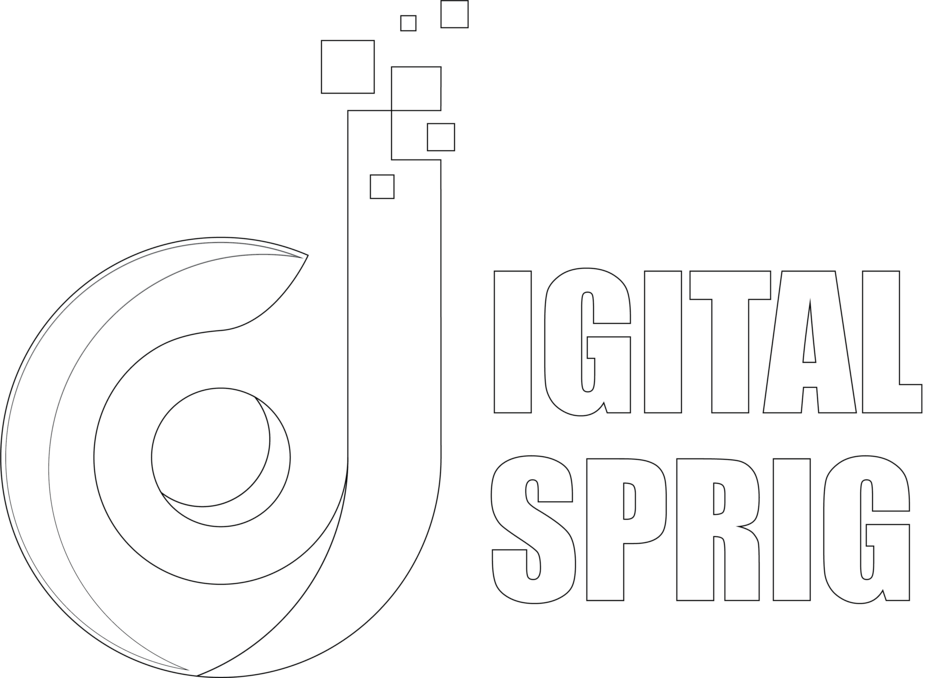Over the years, email marketing has evolved into a powerful tool for building relationships and driving conversions. If you want to elevate your business’s communication, it is vital to understand how to create compelling email campaigns that engage your audience. By incorporating personalization, striking visuals, and strategic calls-to-action, you can transform your outreach efforts into meaningful connections. In this post, you’ll discover effective strategies and best practices to help you craft emails that not only capture attention but also encourage your subscribers to take action.
Key Takeaways:
- Utilize attention-grabbing subject lines to increase open rates and maintain reader interest throughout the email.
- Personalization and segmentation are vital for creating targeted content that resonates with the specific interests and needs of your audience.
- Incorporate clear calls to action (CTAs) that guide recipients towards desired behaviors, such as visiting a website or making a purchase.
Understanding Email Engagement
The success of your email campaigns hinges on understanding email engagement. By focusing on metrics like open rates and click-through rates, you can refine your strategies to foster better connections with your audience. Tracking these figures allows you to gauge how effectively your content resonates with your subscribers and aids in crafting messages that drive interaction.
The Importance of Open Rates
After investing time and resources into your email campaigns, the open rate is your first indicator of success. It reflects how enticing your subject lines are and whether your audience is motivated to engage with your content. A low open rate can signal a need for improvement in your targeting or messaging strategies, ensuring your emails reach the right people with compelling hooks.
Click-Through Rates Explained
Any effective email campaign should focus on the click-through rate (CTR), which measures the percentage of subscribers who click on links within your emails. This metric is a direct reflection of your content’s appeal and relevance, indicating how well you guide your audience toward desired actions.
Consequently, a well-optimized click-through rate can greatly enhance your overall campaign performance. A high CTR signifies that your content effectively captivates your audience’s interest, leading to increased conversions and engagement. On the other hand, a low CTR suggests that your email may lack compelling calls to action or is sending the wrong message to your audience. Use your CTR data to refine your strategies, ensuring that you are continuously improving your content’s relevance and persuasiveness to achieve better results.
Crafting Compelling Subject Lines
Now, your subject line serves as the first impression of your email, so make it count. A captivating subject line piques your audience’s curiosity and compels them to open your message. Focus on creating urgency, adding personalization, or enticing with intriguing questions. With the right approach, you can transform your open rates and foster deeper engagement.
Techniques for Attention-Grabbing Subject Lines
Behind every successful email campaign lies a masterfully crafted subject line. Use techniques such as incorporating numbers, asking questions, or using emojis to stand out in crowded inboxes. Keep it concise, yet compelling, and focus on the value that your email brings to the reader. This strategy ensures you get the attention your content deserves.
A/B Testing Your Subject Lines
Between crafting your subject lines and sending them out, A/B testing is an invaluable tool that allows you to measure the effectiveness of different approaches. By creating two variations of your subject line and sending them to segments of your audience, you can analyze which one resonates better.
Considering the fine line between success and failure, A/B testing your subject lines can yield significant insights. By testing subtle changes, such as tone, length, or the use of urgency, you can identify what resonates best with your audience. Track your open rates and shift your strategies based on real data. This step strengthens your marketing efforts by enabling you to craft subject lines that significantly boost engagement and maximize your campaigns’ impact. Prioritizing testing can lead to informed decisions that drive results.
Personalization Strategies
After implementing the right personalization strategies, you will notice a significant increase in engagement rates. Tailoring your email campaigns to address your audience’s needs and preferences can make a remarkable difference. For further insights, check out Unleashing the Power of Email Marketing to explore effective techniques.
Leveraging Customer Data
Across your campaigns, leveraging customer data is important for creating a more personalized experience. Analyzing purchase history, browsing behavior, and demographic information allows you to segment your audience effectively and deliver tailored content that resonates with their unique preferences.
Dynamic Content for Enhanced Relevance
After including dynamic content in your emails, you will find that relevance and engagement significantly improve. This adaptive approach allows you to present different content to various audience segments based on their interests or behavior.
Due to the ability of dynamic content to adjust in real-time, you can enhance user experience by displaying products or offers that align closely with user preferences. This can lead to a stronger emotional connection with your audience, as they feel understood and valued. When utilized effectively, dynamic content can significantly increase your conversion rates and customer loyalty, ensuring your email campaigns resonate in today’s competitive landscape.

Designing Effective Email Layouts
Unlike generic templates, a well-thought-out email layout effectively captures your audience’s attention and encourages them to engage with your content. Opt for a clean and organized structure that guides readers seamlessly through your message. Utilize headers, bullet points, and ample white space to enhance readability and ensure that your core message stands out, ultimately driving higher conversion rates.
Importance of Mobile Responsiveness
Around 61% of email opens occur on mobile devices, making it vital for your campaigns to be mobile-friendly. If your emails aren’t optimized for smaller screens, you risk losing potential customers who may struggle to navigate your content. Responsive design ensures that your emails look great and function well on any device, providing a positive user experience that leads to increased engagement.
Visual Elements That Drive Engagement
Any email that captivates its audience leverages strong visual elements to enhance its appeal and effectiveness. By incorporating compelling images, brand logos, and attention-grabbing buttons, you can create a visually stimulating experience that resonates with your readers. High-quality visuals can also convey messages quickly and encourage your audience to take action, such as clicking through to your website or making a purchase.
Visual elements play a significant role in driving engagement, as they can instantly capture your audience’s attention. Utilize high-quality images that relate to your message and foster connections with your readership. Don’t underestimate the power of buttons; make them prominent and inviting, guiding your audience toward your desired action. Additionally, consider including infographics and charts to convey complex information simply, enhancing both understanding and interest. Overall, the right visuals can turn a standard email into an engaging experience that prompts your readers to act.
Timing and Frequency of Campaigns
Your email campaign’s timing and frequency play a significant role in driving engagement. Understanding when to reach out can dictate whether your audience sees your message or ignores it. To maximize open rates and interaction, you need to find the sweet spot that resonates with your subscribers. Too frequent, and you risk overwhelming them; too infrequent, and you fade into the background. Finding balance is key to keeping your audience intrigued and eager for your communications.
Best Times to Send Emails
Around the world, studies show that emails sent during midweek, particularly Tuesday to Thursday, yield the best results. Your audience is likely more receptive when they’re settled into their workweek, with fewer distractions. Additionally, late mornings and early afternoons are prime time, when people can engage without the rush of the day. Such strategic timing can significantly improve your email open and response rates.
Finding the Right Frequency
One of the most complicated aspects of crafting an email campaign is determining how often to send them. Over time, your audience will develop expectations based on your past communications, making it crucial to strike a balance. Too many emails can lead to unsubscribes, while too few can result in disengagement. Aim for consistency; a weekly or bi-weekly schedule often works well, but remain flexible to feedback and analytics.
Further, you should analyze your metrics to understand your audience’s preferences. Pay attention to open rates and click-through rates, as these will tell you if your frequency is appropriate. If engagement starts to decline, consider adjusting your schedule. Also, segmenting your audience can allow you to tailor the frequency to different groups, ensuring that you’re delivering value without oversaturation. Ultimately, finding the perfect frequency means testing, measuring, and refining your approach.
Analyzing Campaign Performance
Keep your email marketing strategy agile by regularly analyzing campaign performance. Understanding how your campaigns resonate with your audience allows you to make data-driven decisions that enhance engagement and drive results. By measuring the effectiveness of your emails, you can identify trends, optimize content, and refine your approach to better connect with your subscribers.
Key Metrics to Monitor
Analyzing key metrics is necessary to gauge your campaign’s success. Focus on open rates, click-through rates, conversion rates, and unsubscribe rates. These metrics provide insight into how your audience interacts with your emails and highlight areas for improvement. By closely examining these numbers, you can adjust your strategies to better align with your audience’s preferences and interests.
Tools for Tracking Engagement
Against a backdrop of countless email marketing platforms, you have an array of powerful tools at your disposal for tracking engagement. Metrics can be effortlessly monitored through services like Google Analytics, Mailchimp, and HubSpot, providing in-depth reporting features.
Plus, these tools enable you to gather valuable insights into your audience’s behavior, such as when they open your emails and which links they click. Utilizing these features not only enhances your understanding of engagement patterns but also allows you to segment audiences for targeted follow-ups. Make the most of automation features to streamline your tracking process, ensuring you capture data accurately and efficiently, ultimately allowing for more personalized and effective campaigns.
Conclusion
Considering all points, successfully crafting compelling email campaigns hinges on your ability to engage your audience effectively. By personalizing your messages, employing catchy subject lines, and ensuring a clear call to action, you can significantly enhance user interaction. Don’t hesitate to analyze your results and refine your strategies over time. Your commitment to delivering value will not only boost your engagement rates but also strengthen your relationship with your audience, fostering loyalty and encouraging conversions. Start implementing these tactics today to unleash the full potential of your email campaigns.
FAQ
Q: What are the key components of a compelling email campaign?
A: A successful email campaign consists of several key components:
- Subject Line: This is your first impression; a provocative and intriguing subject line encourages recipients to open the email.
- Personalization: Tailoring the content to individual recipients based on their preferences or behaviors enhances engagement.
- Clear Call-To-Action (CTA): CTAs guide recipients on what action to take next, whether it’s to visit a website, make a purchase, or subscribe to a service.
- High-Quality Content: Providing valuable and relevant information, whether it’s through visuals, articles, or offers, keeps readers interested.
- A/B Testing: Experimenting with different elements (e.g., subject lines, layouts) helps identify what resonates best with your audience.
Q: How do I effectively segment my email list for better engagement?
A: Segmenting your email list involves dividing your subscribers into distinct groups based on specific criteria. This could include:
- Demographic Information: Age, gender, location, etc., can help tailor messages that are more relevant to each group.
- Behavioral Data: Tracking how recipients interact with previous emails allows for targeted follow-ups depending on their engagement level.
- Purchase History: Knowing what products or services subscribers have shown interest in helps in crafting personalized recommendations.
- Interests and Preferences: Allowing subscribers to select topics of interest during sign-up leads to more tailored content in your campaigns.
This targeted approach can significantly enhance open rates and conversions.
Q: What metrics should I track to measure the success of my email campaigns?
A: To effectively gauge the success of your email campaigns, focus on the following key metrics:
- Open Rate: This indicates the percentage of recipients who opened your email, giving insight into the effectiveness of your subject line.
- Click-Through Rate (CTR): CTR measures how many recipients clicked on the links within your email, showcasing the relevance and appeal of your content.
- Conversion Rate: This tracks the percentage of email recipients who completed a desired action, such as making a purchase or sign-up, reflecting the overall efficacy of your campaign.
- Unsubscribe Rate: Monitoring the number of subscribers opting out can help identify issues with content or frequency.
- List Growth Rate: Keeping track of how quickly your email list is growing provides valuable insight into the health of your outreach strategy.
Evaluating these metrics regularly allows for ongoing optimization of future email campaigns.


